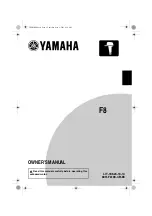
21-4
CPU power management
PC-510 user’s manual
RESUME normal operation. These events include the SUSPEND/
RESUME input (J17[3-4], OPTOB), the COM2 RI signal (Ring Indicator),
and interrupts from selected sources located in the .PMI file. The devices
which are powered ON when the system RESUMEs are specified in
CMOS, loaded from the .PMI file. Devices which do not have associated
access SMIs, must be powered up. In addition, since the CPU was stopped,
the system time must be updated. If an APM driver is operating, it has
the responsibility of updating the time when notified to do so. Otherwise,
the firmware will update the DOS compatible system time if configured to
do so. For operating systems with DOS compatible system clocks, this
function should be disabled in CMOS. Since the clock does not run in
SUSPEND mode and the system is not restarted by IRQ0 to maintain the
time of day, the time must be reset when the system resumes. Normally,
the BIOS can read the actual time from the real time clock and restore the
operating system’s timer from that value. However, some operating sys-
tems do not support the update methods utilized by the BIOS for this
function. The time update can be enabled or disabled using the PC-510
SETUP program. In SETUP, the following options are available:
Power Management:
ENABLED or DISABLED
DOZE Clock (Slow, Stop):
SLOW or STOP
Time Updated After Suspend:
ENABLED or DISABLED
How to initiate the SUSPEND/RESUME option
1. In PC-510 SETUP and in a .PMI file, enable power management and
select the following options:
SETUP:
Power Management:
ENABLED
DOZE Clock (Slow, Stop):
SLOW
Time Updated After Suspend:
ENABLED
TEST.PMI file:
pmi-enable=Y
Enables the power management
2. If SUSPEND is to be generated by:
n
A time-out, then in the same .PMI file, set the time delay, in
minutes, for the “suspend-delay” option.
TEST.PMI file:
suspend-delay=xx
Sets delay time before SUSPEND
(x=0-31 minutes)
n
The external SUSPEND/RESUME signal, refer to the Reset and remote
suspend/resume
section in this chapter for signal requirements to be
applied to J17.
Summary of Contents for PC-510
Page 7: ...Notice to user PC 510 user s manual ...
Page 17: ...xii Contents PC 510 user s manual ...
Page 23: ...About this manual PC 510 user s manual ...
Page 25: ...Overview of Section 1 PC 510 user s manual ...
Page 35: ...2 2 Quick start PC 510 user s manual Figure 2 1 PC 510 component diagram ...
Page 45: ...2 12 Quick start PC 510 user s manual ...
Page 55: ...3 10 SETUP programs PC 510 user s manual ...
Page 59: ...4 4 Save and run programs PC 510 user s manual ...
Page 61: ...Overview of Section 2 PC 510 user s manual ...
Page 73: ...5 12 Serial ports PC 510 user s manual ...
Page 77: ...6 4 LPT1 parallel port PC 510 user s manual ...
Page 83: ...7 6 Console devices PC 510 user s manual ...
Page 119: ...13 8 CRTs and flat panels PC 510 user s manual ...
Page 123: ...14 4 GPS interface PC 510 user s manual ...
Page 125: ...15 2 PC 104 expansion PC 510 user s manual ...
Page 127: ...Overview of Section 3 PC 510 user s manual ...
Page 131: ...16 4 Watchdog timer and hardware reset PC 510 user s manual ...
Page 147: ...18 8 Transferring files remote disks PC 510 user s manual ...
Page 177: ...21 22 CPU power management PC 510 user s manual ...
Page 181: ...22 4 Troubleshooting PC 510 user s manual ...
Page 183: ...Overview of Section 4 PC 510 user s manual ...
Page 203: ...A 20 Technical data PC 510 user s manual ...
Page 231: ...B 28 Software utilities PC 510 user s manual ...














































